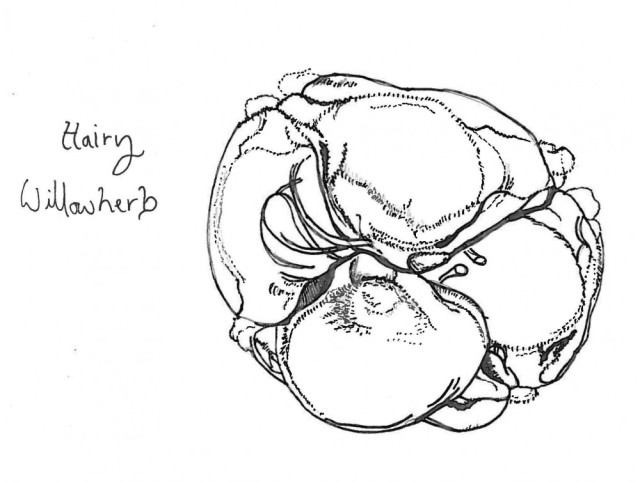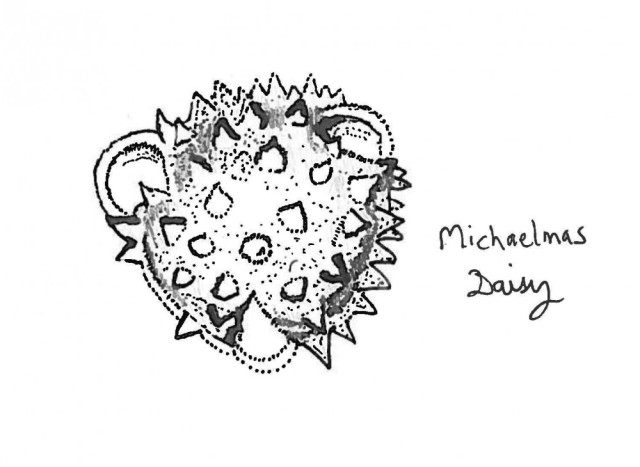Plant sexual material, that is of course. Sorry to disappoint any of my readers hoping to hear about the sexual parts of bees or indeed any other species.
Last Thursday I was busy on the first evening session of a London Beekeepers Association three evening microscopy course. I can reveal that the first challenge of going on a microscopy course is learning how to say the damn word. Cue me lisping ‘Mi-cross-cospy’ again and again.
We began by looking at some slides of brassica and dandelion pollens, as well as a varroa mite, under compound microscopes. The microscopes are an expensive piece of kit that need to be treated carefully; the ones we were using cost between £180-350. We also prepared some of our own pollen slides from fresh flowers and did some Melissopalynology by testing the pollen in our own honeys.
Pollens of course are the plant’s way of making love – they contain male genetic material. Bees and other pollinators – beetles, bats, midges, moths, butterflies, to name a few – help some plants spread their pollen to reach the female parts of other flowers of their species. Other plants, such as grasses and some trees, rely on wind pollination, while aquatic plants use water pollination.
“For to the bee a flower is the fountain of life. And to the flower a bee is a messenger of love.” (Kahil Gibran, The Prophet, 1923)
Under the microscope, pollens reveal themselves to have a multitude of complex and wonderful shapes that often remind me of primitive sea creatures. The trained eyes of someone who has studied Forensic Palynology can identify pollens on a murder victim or suspect and link them to a particular location.
Another use for pollen identification is to check the geographical origins of a honey. All honey should have at least a few grains of pollen – a complete lack of pollen indicates that either 1) the substance tested is not honey or 2) it has been micro-filtered to remove all pollen and conceal its origins. A 2011 survey by Food Safety News famously found that more than three-fourths of the honey they tested from U.S. grocery stores had been ultra-filtered and technically wasn’t honey. If you are a Chinese producer, concealing the origins of your honey can be a way to sneak it into the U.S. and avoid paying the correct import tariffs. Another reason to buy from local beekeepers who you trust!
Back at home I have been practising my pollen drawing, to give you an idea of the fantastic microscopic shapes lodged in the pollen baskets of bees.
Some pollen resources:
- The pollen grain drawings of Dorothy Hodges (IBRA, 2009) – reproduced from the iconic and difficult to get hold of 1952 original by Dorothy Hodges, The pollen loads of the honey bee. Black and white drawings of the pollen grains.
- A colour guide to pollen loads of the honey bee by William Kirk (IBRA, 2006) – colour charts of common pollens.
- Pollen chart – interactive with toggles for different seasons, from Sheffield beekeepers
- Pollen guide – Bristol Beekeeping Association have produced an interactive pollen guide, access by clicking on ‘Pollen guide’ along their top navigation menu






http://au.ibtimes.com/new-zealand-deals-another-export-product-blow-after-uk-fsa-issues-warning-against-kiwi-manuka-honey
What fascinating variety and beautiful intricacy is blowing on the air we breathe. The Hairy Willowherb pollen looks like a group hug!
Rex Sawyer’s ‘Pollen Identification for Beekeepers’ is another useful book.
I have included the above link because of the great ongoing Manuka scam where pollen is often strained out of bulk honey from China and elsewhere to prevent detection of origin and authenticity.before being blended and passed off as Manuka.
New Zealand produces only 1700 tons per annum of genuine certified Manuka. The UK alone sells 1800 tons and worldwide over 10000 tons are sold at inflated prices labelled as Manuka.
Make sure that the label has a certified UMF or MGO or ULF rating on it, mere, 5+ 10+ 15+ might be a blended honey with very little Manuka content..
LikeLike
Thanks Jonathan, I enjoyed the link and also your description of Hairy Willowherb as a “group hug”! The amount of counterfeiting of Manuka honey that goes on does put me off it. I’ll stick to my own!
LikeLike
Thank you Emily for your educative posts. I am always looking forward for each of your new posts. You have been my teacher and a mentor in beekeeping, thank you very very much
LikeLike
Hello Henry, thank you so much for your lovely comment and for reading my posts, that means a lot 🙂
LikeLike
Just yesterday I was watching honey bees entering our hives loaded with pollens of all different colors and had remarked how interesting it would be to know what plants they were sourcing from. Thank you for the links. It is time to do some sleuthing!
LikeLike
Good luck, hope you find some promising clues!
LikeLike
Sooooo…. what your saying is that hayfever is an STD?
LikeLike
Ha ha, you could look at it that way!
LikeLike
What an interesting course. I’d love to know what pollen grains were in the honey I was eating. I suppose it all becomes a bit of a mish mash if you are spinning different supers ? What I mean is, there would usually be a time difference as they were stocking the nectar before you get round to harvesting? Amelia
LikeLike
There could even be a difference in the pollens in different frames within the same super, as the bees can take anywhere from less than a week to a couple of months to fill a super, depending on the weather, available flowers and the size of the colony.
In the case of commercial honey, producers often mix together honey not just from different hives but from different countries. So unless it’s been micro-filtered, you could find all sorts of pollen from around the world there!
LikeLike
There’s so much to this beekeeping malarkey! This business of filtering and mis-labelling honey is a bit depressing. We have several friends who keep bees, I suspect we need to look in to whether any of them ever produce a surplus.
Melissopalynology and palynology are both new words to me. I wonder how I’ll work those into a post? I wouldn’t be too surprised if our boys brought them home to learn for a spelling test. No really.
LikeLike
The great thing about the word ‘palynology’ is that it sounds like it’s spelt. And Melissopalynology does too. So the boys have no excuse for not learning them 🙂
LikeLike
Very interesting information. Thank you. I’m reading ‘Bee Time: Lessons from the hives’ by Mark Winston, he quoted the same Gibran. He also mentioned that Chinese honey is either not real honey or just tainted with banned antibiotics.
LikeLike
You got me, I’m reading it too, which was what inspired me to use the quote! It’s fascinating so far.
LikeLike
Very interesting and I liked your drawings. I believe palynology is sometimes used in forensic science to help solve crimes.
LikeLike
Yes indeed it is, tiny pollen grains can stick around for a long time on clothing and be used to link people to a particular location.
LikeLike
And I thought it was primarily teen boys who did that . . .
LikeLike
Pingback: Pollen, nosema and the case of three missing queens | Adventuresinbeeland's Blog